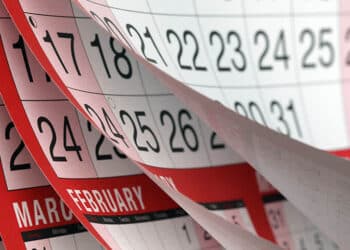Consumer prices climbed 2.1 per cent in the March quarter, taking the annual pace to 5.1 per cent.
“The CPI recorded its largest quarterly and annual rises since the introduction of the goods and services tax,” said head of price statistics at the Australian Bureau of Statistics (ABS), Michelle Marquardt.
New dwellings (+5.7 per cent) were the biggest contributor to CPI growth in the March quarter, followed by automotive fuel (+11.0 per cent) and tertiary education (+6.3 per cent).
“Continued shortages of building supplies and labour, heightened freight costs and ongoing strong demand contributed to price rises for newly built dwellings. Fewer grant payments made this quarter from the federal government’s HomeBuilder program and similar state-based housing construction programs also contributed to the rise,” said Ms Marquardt.
“The CPI’s automotive fuel series reached a record level for the third consecutive quarter, with fuel price rises seen across all three months of the March quarter.”
Annual price inflation for automotive fuel was the highest since the 1990 Iraqi invasion of Kuwait, adding 35.1 per cent.
The ABS also flagged notable rises across the food group (+2.8 per cent), reflecting high transport, fertiliser, packaging and ingredient costs, as well as COVID-related disruptions and herd restocking due to favourable weather.
Quarterly trimmed mean inflation surges
According to the ABS, quarterly trimmed mean inflation increased to 1.4 per cent, the strongest movement since the beginning of the series in 2002.
The Reserve Bank’s (RBA) preferred annual trimmed mean inflation increased to 3.7 per cent, up from 2.6 per cent in the December quarter.
“Annual trimmed mean inflation was the highest since 2009. This reflected the broad-based nature of price rises, as the impacts of supply disruptions, rising shipping costs and other global and domestic inflationary factors flowed through the economy,” Ms Marquardt said.
Last week, the International Monetary Fund (IMF) said it believes inflation could become “de-anchored” from expectations and urged central banks to act aggressively.
Declaring inflation as the “the most important challenge of our time”, IMF director of Monetary and Capital Markets Department Tobias Adrian said “central banks have to act aggressively in order to bring inflation back down”.
“There is a risk of the anchoring of medium-term inflation expectations. So at the moment, we see that shorter-term inflation expectations are very elevated. But then there’s a gradual expectation of inflation coming back to target in most countries around the world.
“However, there’s a risk that eventually, inflation expectations cook the anchor and there could be more of an expectation of inflation, even in the medium term. Central banks have to counteract that by tightening monetary policy, slowing economic activity to bring inflation down,” he explained.
May rate hike more likely
Commenting on Wednesday’s CPI data, Russel Chesler, head of investments and capital markets at VanEck, said there is now a greater chance that the RBA will increase official interest rates in May.
“If, however, the central bank waits until its June meeting, then I’d expect a bigger increase in rates, most probably 40 basis points,” Mr Chesler said, citing the election as a possible consideration for the RBA.
He then expects monthly increases to bring the RBA rate to between 1.75 per cent and 2.25 per cent by year end, which is predicted to place significant upward pressure on mortgage lending rates.
But VanEck is not alone in predicting a rate hike, with economists across the board hurriedly bringing their predictions forward on Wednesday.
AMP’s Shane Oliver Tweeted “Expect #RBA to start hiking next wk. First hike should be +0.4 per cent.”
In a statement emailed to InvestorDaily, EY’s chief economist Cherelle Murphy said the Reserve Bank must tighten monetary policy now.
“To not do so risks the RBA losing credibility,” Ms Murphy opined.
“At its last meeting on 5 April, the RBA board noted that it would be looking at further price and labour costs changes while keeping the cash rate at a record low of 0.1 per cent. But it cannot wait for the March quarter Wage Price Index to be published on 18 May before acting. A rate hike of 0.25 per cent or more could easily be justified in May,” she continued.
Similarly, Tony Sycamore, market analyst at City Index, predicted a 0.15 basis points hike in May.
He did note, however, that the last time the bank lifted rates shortly before an election, the incumbent PM lost the vote.
“The RBA last lifted rates during an election campaign in 2007, and the incumbent Howard government promptly lost the election three weeks later.”







